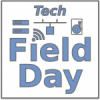The Microsoft Ignite event was a good opportunity to add more informations and also features at the upcoming new generation of Windows, including the next Windows Server (now officially called Windows Server 2016). Also a new Technical Preview is now available for the download (go on the TechNet page).
I’ve already talk about the main news in the previous post Some interesting new features of Windows Server Next. But with the Technical Preview 2 there are more features as described in this post: What’s new in Windows Server 2016 Technical Preview 2.
Note that this list may be not complete yet… some features remain under NDA other may be removed. We have to wait the the RC of the the final product release.













